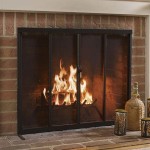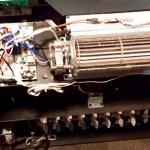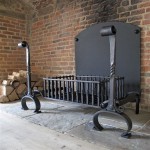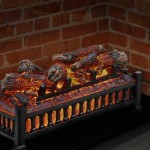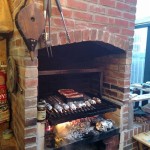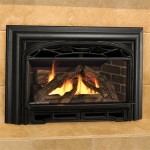Heat Resistant Glass For Fireplace Doors: Understanding the Essentials
Fireplaces offer a comforting source of heat and ambiance, particularly during colder months. A critical component of a safe and efficient fireplace is the glass door. The glass used in these doors isn't ordinary; it's specialized heat resistant glass designed to withstand extreme temperatures and thermal stress.
This article will delve into the characteristics, types, safety considerations, and maintenance of heat resistant glass specifically designed for fireplace doors. Understanding the properties and proper use of this glass is crucial for ensuring the longevity of your fireplace and the safety of your home.
Types of Heat Resistant Glass for Fireplace Doors
Several types of glass are used in fireplace doors, each with varying degrees of heat resistance and specific applications. The most common types include ceramic glass, tempered glass, and borosilicate glass. Understanding the distinctions between these types is paramount in selecting the appropriate glass for your fireplace.
Ceramic Glass: This is arguably the most commonly used type of heat resistant glass for fireplace doors. Ceramic glass is engineered to withstand extremely high temperatures, often exceeding 1300°F (704°C). Its composition allows it to expand and contract very little when subjected to heat, minimizing the risk of cracking or shattering. The near-zero thermal expansion coefficient makes it ideal for direct exposure to the flames and radiant heat generated by a fireplace. Brands like Pyroceram and Neoceram are well-known for their high-quality ceramic glass products used in fireplace applications. Due to its superior heat resistance and durability, ceramic glass is generally the preferred choice for wood-burning fireplaces and stoves.
Tempered Glass: Tempered glass is produced through a process of extreme heating followed by rapid cooling. This process creates a surface layer of compression and an interior layer of tension, resulting in glass that is significantly stronger and more resistant to breakage than standard annealed glass. While tempered glass is more heat-resistant than ordinary glass, it is not designed for direct exposure to the extreme temperatures found inside a wood-burning fireplace. It can typically withstand temperatures up to around 400-500°F (204-260°C). Tempered glass is more suitable for gas fireplaces or electric fireplaces where the heat source is somewhat less intense and direct. In the event of breakage, tempered glass shatters into small, relatively harmless pieces, reducing the risk of serious injury.
Borosilicate Glass: Borosilicate glass is known for its excellent thermal shock resistance, meaning it can withstand sudden and extreme temperature changes without cracking. This type of glass contains boron trioxide, which gives it a low coefficient of thermal expansion. Borosilicate glass is commonly used in laboratory glassware and cookware due to its ability to handle high temperatures and rapid temperature variations. While it offers good heat resistance, borosilicate glass is not as commonly used in fireplace doors as ceramic glass, mainly because ceramic glass typically offers higher temperature resistance and better overall performance in direct flame exposure scenarios.
The selection of the appropriate glass type hinges on factors such as the type of fireplace (wood-burning, gas, or electric), the intensity of the heat generated, and the specific requirements outlined by the fireplace manufacturer. Consulting with a professional is advisable to ensure the correct glass type is chosen for optimal safety and performance.
Safety Considerations for Fireplace Door Glass
Safety is paramount when dealing with fireplaces, and the glass doors play a crucial role in preventing accidents. The proper selection, installation, and maintenance of heat resistant glass are essential for ensuring a safe and efficient fireplace operation.
Proper Installation: Correct installation is critical to ensure the safety and longevity of fireplace door glass. The glass should be securely fitted within the door frame, with appropriate gasketing or sealing to prevent air leaks. Air leaks can compromise the efficiency of the fireplace and potentially lead to overheating of certain areas of the glass. Using the correct type of fasteners and ensuring they are properly tightened is essential to prevent the glass from shifting or becoming loose over time. Following the manufacturer's instructions meticulously during installation is crucial. If you are not confident in your ability to install the glass correctly, it is best to seek the services of a qualified professional.
Regular Inspection: Regularly inspecting the fireplace door glass for any signs of damage, such as cracks, chips, or discoloration, is essential. Even minor imperfections can weaken the glass and increase the risk of failure under high temperatures. Pay close attention to the edges of the glass, as these areas are particularly vulnerable to damage. If any signs of damage are detected, the glass should be replaced immediately to prevent potential hazards. Delaying replacement can lead to a complete shattering of the glass, which can be dangerous and create a mess.
Safe Operating Practices: Adhering to safe operating practices is crucial for preventing accidents and ensuring the longevity of the fireplace door glass. Avoid slamming the doors shut, as this can create stress on the glass and potentially lead to cracking. Do not place flammable materials too close to the fireplace, as excessive heat can damage the glass and create a fire hazard. Ensure proper ventilation in the room to prevent the buildup of carbon monoxide. Never use harsh cleaning chemicals on the glass, as these can damage the surface and reduce its heat resistance. Always use a fireplace screen in conjunction with the glass doors to provide an additional layer of safety and protection.
Understanding Glass Ratings: All heat resistant glass has temperature ratings. Exceeding these ratings can lead to failure. Always consult the manufacturer's specifications to ensure the glass is appropriate for the specific fireplace application. Understanding the limitations of the glass and adhering to safe operating practices are essential for preventing accidents and ensuring the longevity of the glass.
Maintaining Heat Resistant Glass for Longevity
Proper maintenance is crucial for extending the lifespan of heat resistant glass in fireplace doors. Regular cleaning and careful handling can prevent damage and ensure optimal performance for years to come. Ignoring maintenance can lead to reduced visibility, accelerated wear and tear, and ultimately, premature replacement.
Regular Cleaning: Over time, soot, creosote, and other deposits can accumulate on the surface of fireplace door glass, reducing visibility and potentially affecting its heat resistance. Regular cleaning is essential to remove these deposits and maintain the glass's clarity and performance. Use a specialized fireplace glass cleaner, which is designed to remove stubborn deposits without damaging the glass. Avoid using abrasive cleaners or scouring pads, as these can scratch the surface and reduce its heat resistance. Apply the cleaner to a soft cloth and gently wipe the glass in a circular motion. For stubborn deposits, allow the cleaner to sit on the surface for a few minutes before wiping. Always follow the manufacturer's instructions for the cleaner. After cleaning, wipe the glass with a clean, dry cloth to remove any residue.
Gentle Handling: Handle the fireplace door glass with care to prevent scratches, chips, or cracks. When cleaning, opening, or closing the doors, avoid applying excessive pressure or force. Do not slam the doors shut, as this can create stress on the glass and potentially lead to damage. Be particularly careful when handling the edges of the glass, as these areas are more vulnerable to damage. If you need to remove the glass for cleaning or replacement, always support it properly to prevent bending or twisting. Store the glass in a safe place where it will not be exposed to impacts or extreme temperatures.
Gasket Inspection and Replacement: The gaskets around the fireplace door glass play a crucial role in creating a tight seal and preventing air leaks. Over time, these gaskets can become worn, brittle, or damaged, compromising their ability to seal effectively. Regularly inspect the gaskets for any signs of wear or damage. If you notice any cracks, gaps, or deterioration, replace the gaskets immediately. Follow the manufacturer's instructions for replacing the gaskets, and use the correct type of gasket material for your fireplace. Properly sealed gaskets are essential for maintaining the efficiency of the fireplace and preventing overheating of certain areas of the glass.
Professional Inspection: Consider having a professional inspect your fireplace and its glass doors periodically, especially if you use the fireplace frequently. A professional can identify potential problems that you might miss and provide expert advice on maintenance and repairs. This proactive approach can help prevent costly repairs in the future and ensure the continued safe and efficient operation of your fireplace.
By following these maintenance tips, you can extend the lifespan of your heat resistant glass and ensure its continued safe and efficient performance for years to come. Consistent care and attention will help keep your fireplace looking its best and providing a safe and comfortable source of heat.
Selecting the right heat resistant glass for fireplace doors is an important decision. Factors like the type of fireplace, the intensity of the heat, and the overall design aesthetic of the room should be considered. Consulting with a qualified professional can help you make an informed decision that ensures safety, efficiency, and longevity.

Fireplace Glass Doors Vs Screens Full Service Chimney

Standard Size Masonry Fireplace Doors Fixed Frame

Fireplace Glass Doors Vs Screens Full Service Chimney

Fire Ant Glass Door

What S The Connection Between Fireplace Doors And Smartphones

Heritage Glass Fireplace Door For Masonry Fireplaces

Uniflame Gerri Cabinet Style Fireplace Doors With Smoke Tempered Gla

Uniflame Small Gregory Black Cabinet Style Fireplace Doors With Smoke Tempered Glass Ufpds1201blk The Home Depot

The Value Of Glass Doors For Your Fireplace Royal Oak Mi

Fireplace Glass Doors Vs Screens Full Service Chimney

